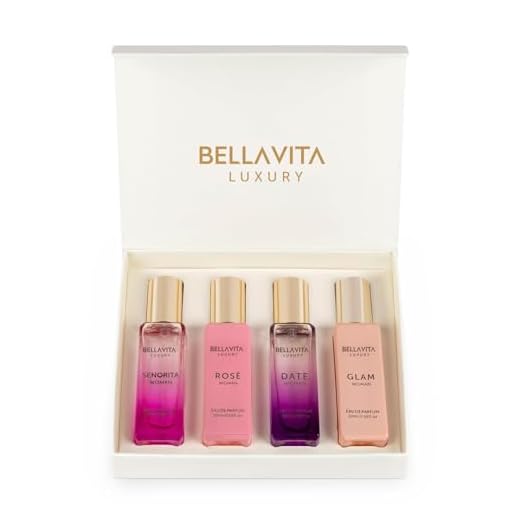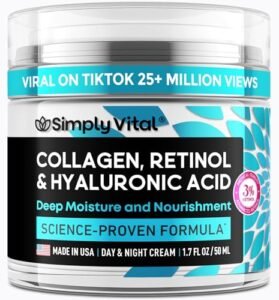Perfume Concentrations Explained
Perfume Concentrations Explained
In the enchanting world of luxury fragrances, the choices can often feel overwhelming. With countless options, each boasting its own allure, it’s easy to feel lost among intricate scent notes and fancy bottles. We understand that investing in a fragrance is a personal journey—one that not only reflects your style but also your essence. That’s why we’re here to help! In this post, we’ll demystify the various concentrations of perfumes, from eau de cologne to parfum, and explain their significance in the luxury fragrance landscape. By understanding these differences, you’ll be empowered to make informed purchasing decisions that align with your preferences and lifestyle, ensuring that your next fragrance truly captures your unique spirit. Join us as we explore the subtleties of scent concentrations and unlock the secrets of the fragrance world together.



What Are Perfume Concentrations?
Understanding perfume concentrations is essential for anyone looking to purchase fragrance products. The concentration refers to the percentage of aromatic compounds present in the formulation, which directly affects the scent’s strength, longevity, and even the overall experience of wearing it.
Defining Perfume Concentrations
Perfume concentrations are categorized based on the amount of aromatic essences mixed with fragrant solvents, primarily alcohol and water. The higher the percentage of fragrance oils, the more intense and longer-lasting the scent becomes. This percentage typically ranges from around 2% to 40% depending on the type of fragrance product.
Common Types of Perfume Concentrations
1. Parfum (Perfume)
- Aromatic Compounds: 20% – 40%
- Longevity: 6 to 8 hours
- Characteristics: Parfum is the most concentrated form of fragrance. Its rich and layered scent typically lasts the longest on the skin. A popular example is Chanel No. 5 Parfum, which features a complex bouquet of floral and aldehyde notes, allowing it to linger throughout the day.
2. Eau de Parfum (EDP)
- Aromatic Compounds: 15% – 20%
- Longevity: 4 to 6 hours
- Characteristics: Eau de Parfum has a slightly lighter concentration compared to Parfum, but it provides a strong scent presence and good longevity. An example of this is Yves Saint Laurent Black Opium Eau de Parfum, which offers a sensual blend of coffee and vanilla, perfect for evening wear.
3. Eau de Toilette (EDT)
- Aromatic Compounds: 5% – 15%
- Longevity: 3 to 4 hours
- Characteristics: Eau de Toilette is considered more casual, making it ideal for daytime wear. It has a fresher, lighter scent. A well-known example is Dolce & Gabbana Light Blue Eau de Toilette, celebrated for its crisp and fruity notes that are perfect for hot weather.
4. Eau de Cologne (EDC)
- Aromatic Compounds: 2% – 5%
- Longevity: 2 to 3 hours
- Characteristics: Eau de Cologne features the lowest concentration of fragrance oils, providing a refreshing spritz suitable for a quick scent refresh. 4711 Original Eau de Cologne, with its citrusy and herbal top notes, is a classic recommendation for those looking for a light, invigorating fragrance.
Comparison Table of Perfume Concentrations
| Type | Aromatic Compounds | Longevity | Example Product |
|---|---|---|---|
| Parfum | 20% – 40% | 6 to 8 hours | Chanel No. 5 Parfum |
| Eau de Parfum | 15% – 20% | 4 to 6 hours | Yves Saint Laurent Black Opium EDP |
| Eau de Toilette | 5% – 15% | 3 to 4 hours | Dolce & Gabbana Light Blue EDT |
| Eau de Cologne | 2% – 5% | 2 to 3 hours | 4711 Original Eau de Cologne |
The Differences Between Concentrations
When it comes to choosing a fragrance, understanding the various concentrations can significantly enhance your overall scent experience. Each concentration offers distinct characteristics in terms of scent intensity, longevity, and ideal usage scenarios. Let’s delve into the nuances of different perfume concentrations, highlighting popular examples from each category.
Eau de Cologne (EDC)
Characteristics:
- Scent Intensity: Light
- Longevity: 2-4 hours
- Ideal Usage: Daytime wear, casual outings, warmer seasons
Eau de Cologne typically contains 2-5% fragrance oil diluted in alcohol and water. Due to its light formulation, it offers a refreshing burst of scent that can invigorate your senses without being overpowering.
Popular Examples:
- 4711 Original Eau de Cologne: A classic, this fragrance embodies a fresh citrus and herbal scent, perfect for a basic outing or warm weather.
- Tom Ford Neroli Portofino: With notes of citrus, floral, and amber, this fragrance captures the essence of the Mediterranean and is ideal for casual summer days.
Eau de Toilette (EDT)
Characteristics:
- Scent Intensity: Moderate
- Longevity: 3-6 hours
- Ideal Usage: Everyday wear, office environments, transitional seasons
Eau de Toilette generally has a concentration of 5-15% fragrance oil. It strikes a balance between being noticeable yet not overwhelming, making it a popular choice for mid-day applications.
Popular Examples:
- Dior Sauvage: Known for its bold yet approachable blend of spices and bergamot, this fragrance is suitable for almost any occasion, from work to evening outings.
- Chanel Chance Eau Tendre: This youthful, fruity-floral fragrance provides a lively scent that can seamlessly transition from day to night.
Eau de Parfum (EDP)
Characteristics:
- Scent Intensity: Strong
- Longevity: 4-8 hours
- Ideal Usage: Evening wear, special occasions, or cooler weather
Eau de Parfum typically contains 15-20% fragrance oil, offering a richer and more complex scent profile. Its longevity makes it ideal for situations where you want the fragrance to last throughout the day or evening.
Popular Examples:
- Yves Saint Laurent Black Opium: Rich and seductive, this fragrance combines coffee and vanilla, making it a favorite for nights out.
- Lancôme La Vie Est Belle: With its sweet blend of iris and praline, this fragrance captures an uplifting sophistication perfect for formal events.
Parfum (Extrait de Parfum)
Characteristics:
- Scent Intensity: Very strong
- Longevity: 6-12 hours or more
- Ideal Usage: Special events, intimate gatherings, cooler seasons
Also known as extrait de parfum, this highest concentration of fragrance contains 20-40% scent oil. Due to its potency, just a small application is needed. This makes it ideal for moments when you want to make a lasting impression.
Popular Examples:
- Creed Aventus: This statement fragrance, with notes of pineapple, birch, and musk, is often associated with success and confidence, making it a must-have for special occasions.
- Guerlain Shalimar: A classic from the 1920s, it remains a timeless scent with its opulent mix of vanilla, bergamot, and jasmine, perfect for elegant evenings.
Quick Comparison Table
| Concentration | Fragrance Oil (%) | Longevity | Ideal Usage | Examples |
|---|---|---|---|---|
| Eau de Cologne (EDC) | 2-5% | 2-4 hours | Daytime, Casual, Warm Weather | 4711 Original, Tom Ford Neroli Portofino |
| Eau de Toilette (EDT) | 5-15% | 3-6 hours | Everyday, Office, Transitional | Dior Sauvage, Chanel Chance Eau Tendre |
| Eau de Parfum (EDP) | 15-20% | 4-8 hours | Evening, Special Occasions | Yves Saint Laurent Black Opium, Lancôme La Vie Est Belle |
| Parfum | 20-40% | 6-12+ hours | Special Events, Intimate | Creed Aventus, Guerlain Shalimar |
Understanding these different concentrations can empower you to select the right fragrance for the right occasion, maximizing both scent enjoyment and longevity throughout your day. With this comprehensive guide, you’re equipped to navigate the perfume world with confidence and flair.
Choosing the Right Concentration for You
Choosing a perfume is more than just picking a pleasing scent; it’s also about selecting the right concentration to match your personal preferences, lifestyle, and the occasions you plan to wear it for. Understanding the differences between perfume concentrations can help you make an informed choice that will leave you feeling confident and comfortable.
Understanding Perfume Concentrations
Perfumes come in various concentrations, each with its unique character and longevity. Here’s a breakdown of the major types:
- Parfum (Extrait de Parfum): Typically contains 20% to 30% fragrance oils. This concentration offers the richest scent, with a lasting power of 8 hours or more. Example: Chanel No. 5 Parfum.
- Eau de Parfum (EDP): Contains 15% to 20% fragrance oils. This is a versatile option that provides a strong scent presence lasting 4 to 8 hours. Example: Yves Saint Laurent Black Opium.
- Eau de Toilette (EDT): Contains 5% to 15% fragrance oils, making it lighter and perfect for daytime wear. Its longevity ranges from 3 to 5 hours. Example: Dolce & Gabbana Light Blue.
- Eau de Cologne (EDC): Contains 2% to 5% fragrance oils, providing a refreshing scent ideal for casual wear, fading within 2 to 4 hours. Example: 4711 Eau de Cologne.
- Body Mist: Contains less than 3% fragrance oils, making it the lightest option. It’s perfect for a quick refresher, lasting an hour or two. Example: Victoria’s Secret Body Mist.
Here’s a quick comparison table:
| Concentration | % Fragrance Oils | Longevity | Example Product |
|---|---|---|---|
| Parfum | 20% – 30% | 8+ hours | Chanel No. 5 Parfum |
| Eau de Parfum | 15% – 20% | 4 – 8 hours | Yves Saint Laurent Black Opium |
| Eau de Toilette | 5% – 15% | 3 – 5 hours | Dolce & Gabbana Light Blue |
| Eau de Cologne | 2% – 5% | 2 – 4 hours | 4711 Eau de Cologne |
| Body Mist |
Choosing the Right Strength for Your Fragrance
In conclusion, understanding perfume concentrations is essential for enhancing your fragrance experience. From Eau de Cologne to Extrait de Parfum, each concentration offers a unique balance of scent intensity and longevity, catering to different preferences and occasions. By recognizing the significance of these variations, you can make informed choices that align with your personal style and needs. We encourage you to explore the diverse range of fragrance concentrations available, allowing you to discover the perfect match that resonates with you. Embrace the journey of finding your signature scent!
12 Comments
Comments are closed.



Luxury fragrances like Creed and Tom Ford often have great longevity! But they can be pricey. Any tips on finding good dupes that last just as long?
Totally understand the struggle! Look for brands like Zara or Dossier that offer great alternatives at lower prices—sometimes you can find gems! I’ll keep this in mind for future posts.
I’ve always struggled with finding scents that last. Could you touch on why some perfumes fade faster than others?
Thanks for this clear breakdown! I’m still confused about the difference between EDT and EDP, though. Any quick summary?
I love how you broke down the differences! Can you expand on the best way to apply each concentration? Do you have any tips?
Great question! For higher concentrations, applying to pulse points is perfect. For lighter ones, a spritz on clothes can work wonders. I’ll definitely add more tips in the future!
This article makes me want to learn more about fragrance layers! Any books or blogs you recommend?
Absolutely! I suggest checking out ‘Perfume: The Story of a Murderer’ for a fascinating read and ‘Now Smell This’ blog for ongoing fragrance discussions!
I recently switched to a higher concentration and wow, what a difference! I’m in love with Maison Francis Kurkdjian’s Aqua Universalis now!
Hey, can you recommend a good eau de parfum for everyday wear? I love fresh and floral scents!
This is super informative! Could you dive deeper into how the concentration affects longevity? I’m curious!
Absolutely! The concentration really impacts how long a fragrance lasts on your skin. Higher concentrations like parfum can last all day, while lighter options might fade quicker. I’ll consider adding more details in future posts!